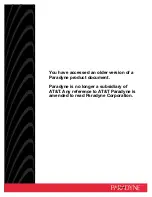
153
•
Use an ASCII string as the client ID. If an ASCII string is used, the type value is 00.
•
Use a hexadecimal number as the client ID. If a hexadecimal number is used, the type value is
the first two characters in the number.
•
Use the MAC address of an interface to generate a client ID. If this method is used, the type
value is 01.
The type value of a DHCP client ID can be displayed by the
display dhcp server ip-in-use
or
display dhcp client
command.
Restrictions and guidelines
Make sure the ID for each DHCP client is unique.
Procedure
To configure a DHCP client ID for an interface:
Step Command
Remarks
1.
Enter system view.
system-view
N/A
2.
Enter interface view.
interface
interface-type
interface-number
N/A
3.
Configure a DHCP
client ID for the
interface.
dhcp client identifier
{
ascii
ascii-string
|
hex hex-string
|
mac
interface-type
interface-number
}
By default, an interface generates the
DHCP client ID based on its MAC address.
If the interface has no MAC address, it uses
the MAC address of the first Ethernet
interface to generate its client ID.
Enabling duplicated address detection
DHCP client detects IP address conflict through ARP packets. An attacker can act as the IP address
owner to send an ARP reply. The spoofing attack makes the client unable to use the IP address
assigned by the server. As a best practice, disable duplicate address detection when ARP attacks
exist on the network.
To enable duplicated address detection:
Step Command
Remarks
1.
Enter system view.
system-view
N/A
2.
Enable duplicate address
detection.
dhcp client dad enable
By default, the duplicate address
detection feature is enabled on an
interface.
Setting the DSCP value for DHCP packets sent by
the DHCP client
The DSCP value of a packet specifies the priority level of the packet and affects the transmission
priority of the packet.
To set the DSCP value for DHCP packets sent by the DHCP client:
Step Command
Remarks
1.
Enter system view.
system-view
N/A
















































